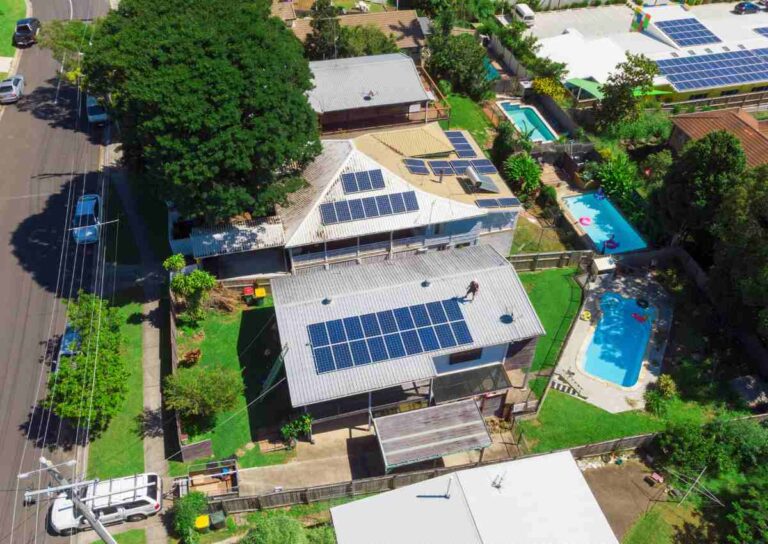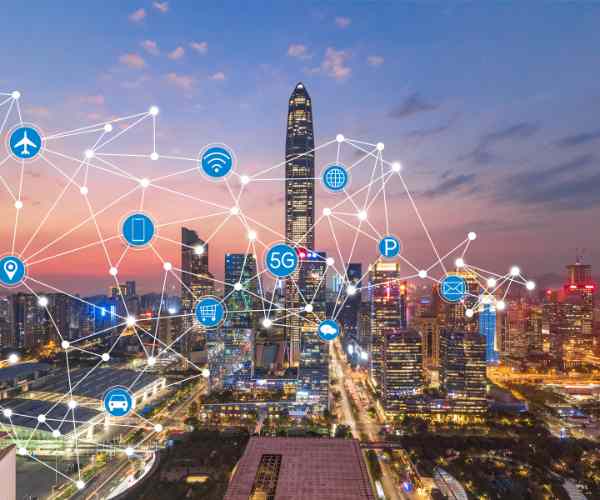In today’s hyperconnected world, where speed and reliability are paramount, 5G stands at the forefront of technological innovation, promising to redefine the way we communicate, work, and live. This fifth-generation wireless technology represents more than just an upgrade; it signifies a quantum leap in connectivity, ushering in a new era of revolutionized connectivity. With 5G, the possibilities seem boundless, but what lies beyond this cutting-edge technology? How will it shape our future interactions with the digital world? These questions serve as the catalyst for exploring the evolution of connectivity technologies and understanding the profound impact of 5G on our lives.

Understanding 5G
At its core, 5G represents a paradigm shift in wireless communication, characterized by lightning-fast speeds and ultra-low latency. Unlike its predecessors, 5G operates on higher frequency bands, enabling data to be transmitted at unprecedented rates, measured in gigabits per second. This enables real-time applications such as augmented reality experiences and remote surgeries to become a reality, revolutionizing industries and enhancing our everyday lives.
Compared to previous generations of wireless technology, 5G boasts several key characteristics that set it apart. For instance, while 4G is primarily focused on delivering mobile broadband to smartphones, 5G extends its reach to include a myriad of connected devices within the Internet of Things (IoT) ecosystem. This expanded connectivity paves the way for smart cities where everything from traffic lights to trash cans is intelligently connected, optimizing urban living and resource management.
Moreover, 5G promises to unlock the full potential of autonomous vehicles, enabling seamless communication between cars and infrastructure to ensure safe and efficient transportation. In the realm of healthcare, 5G facilitates remote patient monitoring and telemedicine, bridging the gap between patients and healthcare providers, especially in underserved areas.
However, the implementation of 5G infrastructure comes with its share of challenges and limitations. One major hurdle is the need for extensive infrastructure deployment, including small cells and fiber-optic networks, to support widespread coverage and ensure reliable connectivity. Additionally, concerns about privacy and security arise as more data is transmitted across 5G networks, necessitating robust measures to safeguard sensitive information.
The Road to Beyond 5G
As we look beyond the horizon of 5G, a new frontier of connectivity beckons, fueled by emerging technologies and standards that promise to redefine the way we interact with the digital world. One such prospect is 6G and beyond, the next evolutionary step in wireless communication. While still in its nascent stages, 6G holds the potential to surpass 5G in terms of speed, latency, and capacity, ushering in an era of hyperconnectivity where the Internet of Things (IoT), augmented reality, and artificial intelligence converge seamlessly.
The capabilities and features of future wireless technologies are the subject of fervent speculation and research. Some envision terahertz frequencies and quantum communication as the building blocks of 6G, enabling data transmission at speeds that surpass the human imagination. Others explore the concept of non-terrestrial networks, leveraging satellites and stratospheric platforms to extend connectivity to remote and underserved areas, transcending the limitations of traditional terrestrial infrastructure.
Amidst these technological endeavors, ongoing research and development efforts in the field of connectivity are paving the way for the next generation of wireless networks. Institutions and organizations worldwide are investing heavily in 5G-advanced technologies, such as massive MIMO and millimeter-wave communications, to enhance network capacity and performance. Moreover, collaborations between academia, industry, and government bodies are fostering innovation in communication engineering and systems architecture, laying the groundwork for the wireless networks of tomorrow.
However, the transition beyond 5G is not merely a matter of technological advancement; it carries profound societal and economic implications. From smart cities to rural communities, ubiquitous connectivity has the potential to bridge the digital divide and spur economic growth. According to studies by the World Economic Forum, every 10% increase in broadband penetration leads to a 1.38% increase in GDP growth for developing countries, underscoring the transformative power of connectivity on a global scale.
Yet, with great promise comes great responsibility. As we embark on this journey towards beyond 5G, it is imperative to consider the ethical, regulatory, and environmental ramifications of our technological pursuits. Striking a balance between innovation and sustainability, between connectivity and privacy, will be paramount in shaping a future where advanced connectivity enriches lives and empowers communities across the globe.
Next-Generation Connectivity Technologies
What role do artificial intelligence (AI) and machine learning (ML) play in optimizing 5G networks?
AI and ML are poised to revolutionize the way 5G networks are deployed, managed, and optimized. By harnessing the power of AI algorithms, telecom operators can dynamically allocate network resources, predict network congestion, and identify potential security threats in real-time. For example, AT&T employs AI-based predictive analytics to anticipate network outages and proactively address issues before they impact customers, resulting in 99.999% network reliability.
Furthermore, ML algorithms enable self-optimizing networks (SON), where network parameters are continuously adjusted based on changing traffic patterns and user behavior. This proactive approach not only enhances network performance but also reduces operational costs. According to a study by Ericsson, SON implementation can lead to a 30% reduction in operational expenses for telecom operators.
How does 5G intersect with other transformative technologies like the Internet of Things (IoT) and edge computing?
5G serves as the backbone of the IoT ecosystem, enabling seamless connectivity and communication between billions of smart devices. With its low latency and high bandwidth, 5G empowers IoT applications such as smart cities, industrial automation, and healthcare monitoring. For instance, Siemens utilizes 5G-enabled IoT sensors to optimize manufacturing processes, resulting in 20% higher production efficiency.
Moreover, the integration of 5G with edge computing architecture brings computing resources closer to the point of data generation, reducing latency and enhancing real-time processing capabilities. This convergence enables mission-critical applications such as autonomous vehicles and remote surgery. Verizon leverages edge computing and 5G to deliver ultra-low latency services for gaming and augmented reality, providing users with immersive experiences.
What impact does 5G have on industries such as telecommunications, manufacturing, and entertainment?
In the telecommunications sector, 5G unlocks new revenue streams through enhanced mobile broadband services and enterprise offerings. For example, T-Mobile leverages 5G to deliver faster download speeds and lower latency, attracting subscribers and gaining a competitive edge. In manufacturing, 5G-powered smart factories enable predictive maintenance and real-time monitoring, reducing downtime and optimizing production processes. Companies like Bosch and Huawei leverage 5G to implement Industry 4.0 initiatives, resulting in 30% higher equipment utilization and a 25% reduction in maintenance costs.
In the entertainment industry, 5G enables seamless streaming of high-definition content and immersive experiences. Netflix partners with telecom operators to deliver 4K and 8K video streaming over 5G networks, catering to the growing demand for high-quality entertainment on mobile devices. Additionally, 5G facilitates the proliferation of augmented reality (AR) and virtual reality (VR) applications, transforming how users interact with digital content. Disney utilizes 5G to create immersive AR experiences at theme parks, enhancing visitor engagement and satisfaction.
Can you share case studies of companies or organizations leveraging 5G to innovate and improve their operations?
Certainly! One notable example is Verizon, which collaborates with Corning to deploy 5G-enabled private networks for smart manufacturing. By leveraging 5G connectivity, Corning’s factory achieves real-time monitoring of production processes, leading to a 20% increase in production efficiency and reduced downtime.
Another case study is KT Corporation, a leading telecom operator in South Korea, which partners with Samsung to launch 5G-enabled smart city projects. Through 5G connectivity, KT Corporation implements intelligent traffic management systems and environmental monitoring solutions, resulting in reduced traffic congestion and improved air quality in urban areas.
Key Takeaway
- 5G represents a monumental shift in connectivity, offering lightning-fast speeds and ultra-low latency that will reshape how we interact with technology.
- Beyond 5G, emerging technologies like 6G and AI-driven optimization hold the promise of even greater advancements in wireless communication.
- It is crucial for individuals and businesses to stay informed about the latest developments in wireless technology to remain competitive in a rapidly evolving digital landscape.
- The transformative potential of 5G extends beyond faster downloads; it has the power to revolutionize industries, enhance productivity, and improve quality of life.
- Collaboration among industry stakeholders, policymakers, and researchers is essential to realize the full potential of next-generation connectivity and address challenges effectively.
- Embracing technological advancements like 5G is not just about staying ahead of the competition; it is about creating a future where connectivity is more accessible and equitable for all.
- By working together and leveraging the capabilities of advanced connectivity, we can build a world where innovation thrives, economies flourish, and connectivity empowers individuals and communities.
Conclusion
In conclusion, the advent of 5G and the journey beyond herald a new era of connectivity that promises to transform our lives in ways we’ve never imagined. Embracing these technological advancements is not just a matter of staying relevant; it’s about shaping a future where connectivity is a fundamental right, driving innovation, economic growth, and societal progress. By fostering collaboration and embracing the possibilities of next-generation connectivity, we can create a world where the benefits of technology are accessible to all, paving the way for a brighter, more connected future.
More Post






